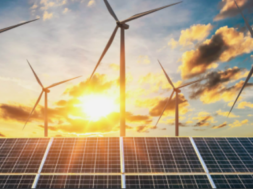
Green energy: For the first time, India’s solar installations in 2021 surpass 10 GW
Virendra Pandit
New Delhi: In its march towards energy resources transition, India added 10 gigawatts (GW) of solar capacity in the calendar year (CY) 2021, a 210 percent increase year-over-year (YoY), compared to 3.2 GW installed in CY 2020, according to the newly released update by Mercom India Research.
The Government of India has set a target of installing 175 GW of renewable energy capacity by the year 2022, which includes 100 GW from solar, 60 GW from wind, 10 GW from bio-power, and 5 GW from small hydro-power.
The cumulative solar installed capacity in India was approximately 49 GW at the end of 2021. It accounted for 62 percent of new power capacity additions in 2021, the largest share of power capacity ever. The renewable energy sources accounted for about 77 percent of the new power capacity added in 2021.
During CY 2021, large-scale solar projects accounted for 83 percent of installations and saw a 230 percent surge in YoY. Rooftop installations increased by 138 percent YoY, Mercom said in a statement.
A significant number of projects were moved from 2020 to 2021 because of Covid-19 extensions, which boosted installation totals in 2021.
“Solar installations in India in 2021 were the highest ever, with the country breaching 10 GW for the first time in a year. The demand outlook for 2022 is strong, but significant challenges await the industry, beginning with the basic customs duty, import restrictions, and the goods and services tax on top of global supply chain issues, and high component prices. Challenges aside, the Indian solar market has significant growth potential and is only just starting to take off,” said Raj Prabhu, CEO, Mercom Capital Group.
The report highlighted a rise in the average cost of projects in CY 2021 because of the higher prices of the module and raw materials and freight charges. Average large-scale project costs in Q4 increased 21.6 percent YoY in 2021—the highest ever rise over the past ten years. Average rooftop solar costs in Q4 2021 rose 14.8 percent YoY.
Rajasthan, Karnataka, and Andhra Pradesh were the top three states for cumulative large-scale solar capacity, accounting for 50 percent of installations in India as of December 2021. In 2021, Rajasthan led capacity additions with 4.5 GW of solar installations.
“The incredible energy transition story in India was clearly evident in 2021; solar was the most installed new generation source, making up almost a third of the new capacity, dwarfing coal and other fossil fuels,” said Prabhu.
India’s installed renewable energy capacity, including large hydro projects, stood at 150.9 GW, accounting for 38.4 percent of the overall power mix at the end of December 2021. Newly installed solar capacity in 2021 reached a new high, making up 62 percent of all power capacity installed in 2021.
Solar now accounts for 12.4 percent of India’s total installed power capacity and 32 percent of the installed renewable capacity as of 2021. It is now India’s top renewable energy generation source and has surpassed large hydro installations. Wind and solar together made up 71 percent of new power capacity additions in 2021.














